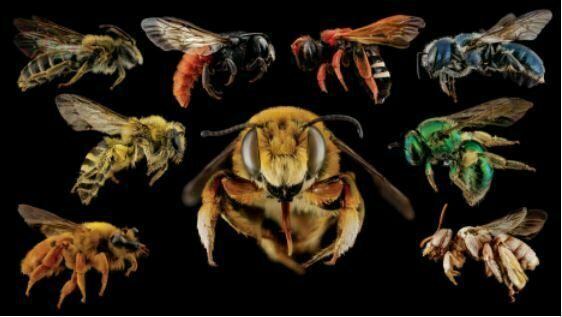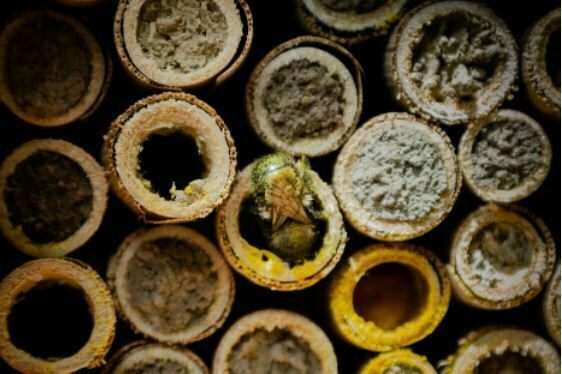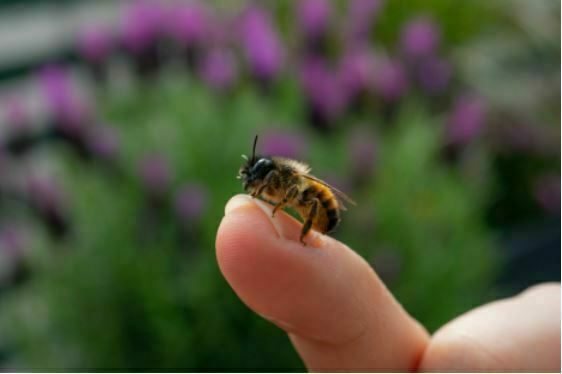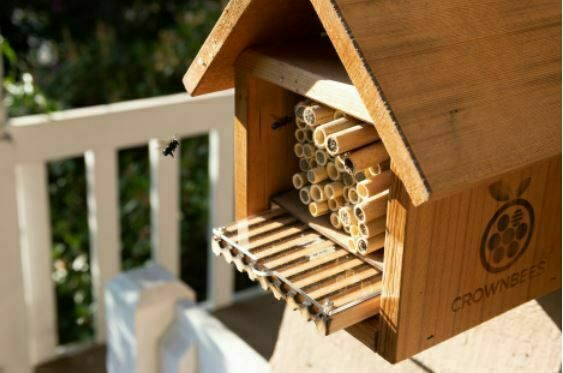Do you know the bees in your backyard?
When you think of bees, you probably imagine a giant, fluffy bumblebee or a social honeybee buzzing from flower to flower.
But the bee world is highly diverse! Over 20,000 known bee species worldwide, and 4,000 are native to the United States. Why is bee diversity so important? In the simplest sense, the greater the diversity of bees, the better the pollination!
Flowers must be pollinated before a plant produces fruit and seeds. Many of our favorite foods, rich in vitamins and nutrients, rely on animal pollinators like bees to pollinate. We can thank animal pollinators for about 1 in 3 bites of our food; without them, we wouldn't have coffee, chocolate, cotton or many other foods.
Pollination sounds simple, but how pollen is collected and how a bee behaves affects its pollination effectiveness.
Honeybees are often considered the most important crop pollinator due to their sheer numbers. While it's true that managed populations of honeybees and bumblebees play a vital role in agriculture, other bee species have distinct traits that make them more efficient pollinators of certain crops, like blueberries, apples and almonds. In fact, researchers estimate that wild bee populations provide half of the crop pollination services worldwide.
Different species of bees have evolved to have unique body sizes, tongue lengths, ways of gathering pollen, flower and weather preferences, life cycles, and foraging patterns; these differences help bees pollinate certain plants at certain times. A great example of this is early spring pollination. Honeybees tend not to forage when the temperature drops below 55° or when it rains. On the other hand, solitary bees, like mason bees, will forage in inclement weather, making them essential for early spring flowers like apples, pears, plums, and cherries.
Wait–what are solitary bees?
Let's get back to the 20,000+ bee species in the world. Less than 10% are social bees like honeybees and bumblebees, and the other 90% are solitary bees. As you may have guessed, solitary bees live independently, not in colonies with a queen or worker bees like honeybees and bumblebees. Each female builds her nest, collects her pollen and nectar, and lays her eggs without help from other bees. We like to say that each solitary female bee is a queen!
Where do solitary bees live if they don't live in hives?
Globally, 70% of our native solitary bee species nest in the ground, laying their eggs in tunnels just below the surface. The remaining 30% are cavity-nesting bees. These bees build their nests inside tunnels left behind by insects, in the hollow stems of certain plants, and in artificial bee houses and hotels. Most cavity-nesting bee species don't cause damage to your deck or home because they nest in pre-made holes instead of boring into wood.
Do solitary bees sting?
Solitary bees do not need to defend hives or stores of honey and wax. Despite having a stinger, solitary female bees are gentle and rarely sting even when handled, making them safe around kids and pets.
If you get stung, it's much less painful than a sting from a social bee–people stung by solitary bees liken the pain to that of a mosquito. As a result, solitary bee raisers do not need special protective equipment!
Since cavity-nesting bees nest above ground and will readily nest in bee houses, we can easily raise solitary bees, both managed and native species, in our backyards.
Healthy populations of solitary bees are a great way to increase pollination rates in your yard and garden! Remember, if you choose to put up a bee house in your yard or garden, it's important to perform a few easy maintenance steps each year to ensure healthy future populations of solitary bees!
We have a ton of free resources on the Crown Bees website to help you learn how to set up a bee house and properly care for the bees that take up residence.
If you choose not to set up a bee house, you can always grow Joe-Pye weed, sunflowers or other plants with hollow, pithy stems. Cavity-nesting bees will make nests in these plants' dried stems and twigs, so consider leaving the "dead" plants alone through the fall and winter, because there may be pollinator nests inside!
Whether you put up a bee house or plant a few pithy plants, creating nesting habitats for our bee populations is a fun and rewarding activity for the whole family (and the bees). Kids in particular love the gentle nature of these solitary bees.
And remember to visit us at crownbees.com to learn more about these fantastic little pollinators!
Please support The Woodinville Weekly by subscribing today!
You may also like:



.png)




